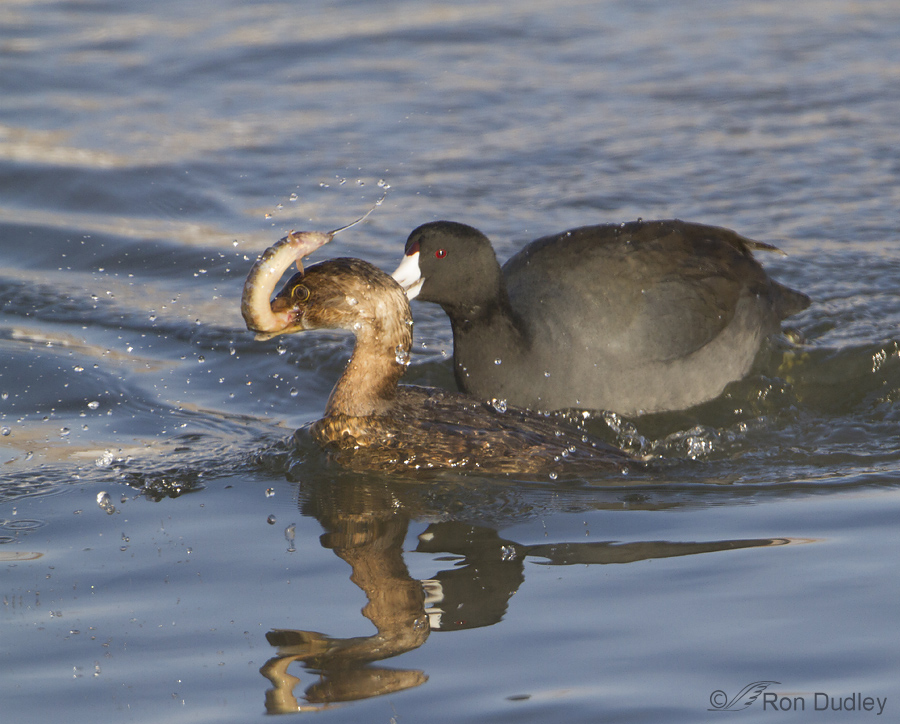Category: Fighting
Grebe Running Across A Pond’s Surface To Protect Its Prized Fish
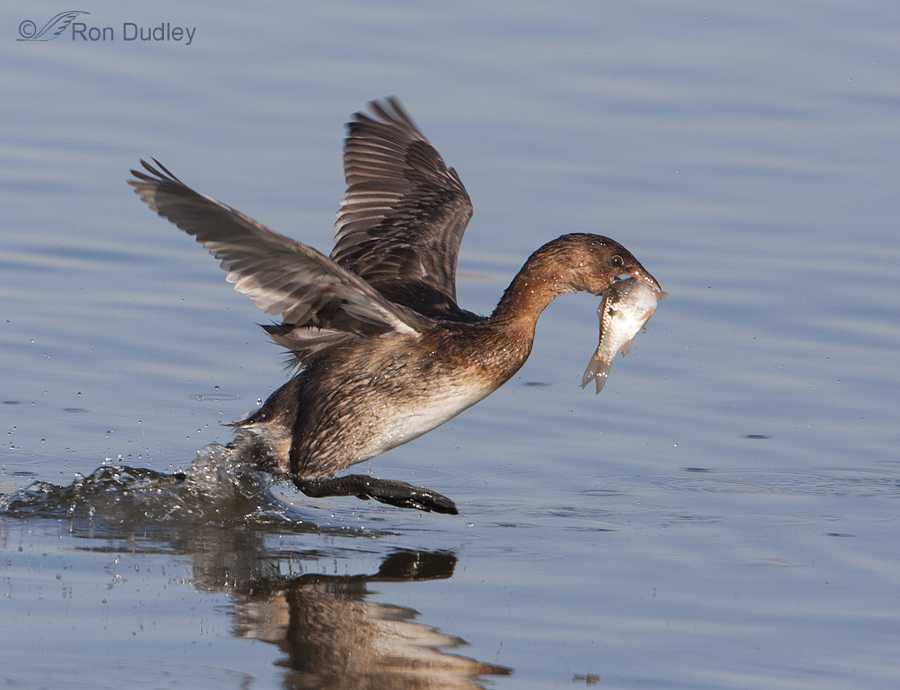
At first glance Pied-billed Grebes may come across as nondescript, bland little birds without much personality but I’ve found the opposite to often be true. When they’re not resting or grooming they’re active, quite vocal and when they’re feeding in groups they’re often aggressive, even pugnacious. Their kleptoparasitic tendencies can be entertaining to watch in the extreme.
Notice the layer of ice at the bottom of the frame – that ice will come into play later in the sequence.
Gadwall Stealing Food From A Coot
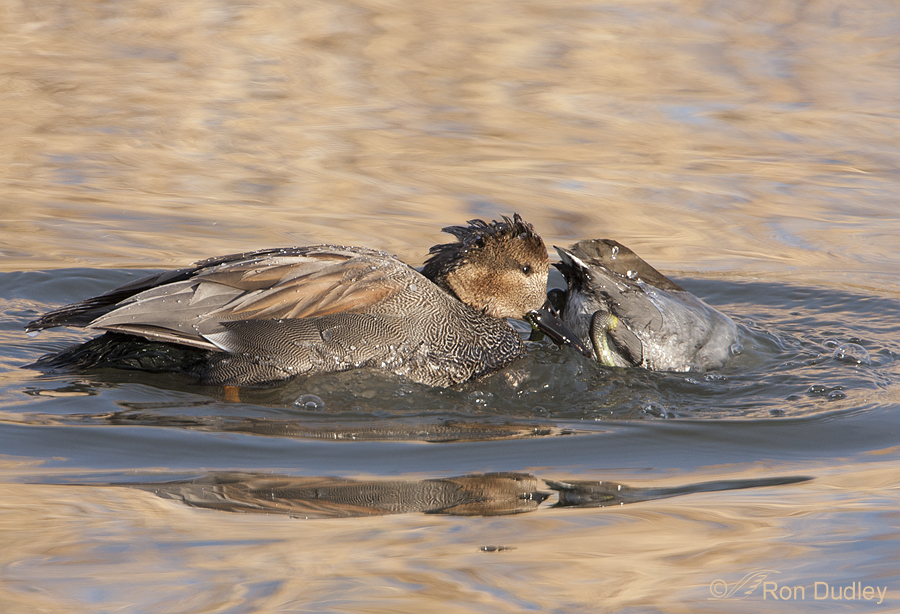
Gadwalls are well-known for stealing food (kleptoparasitism) from American Coots . They eat the same kinds of food (submerged aquatic vegetation), Gadwalls are almost a third bigger than coots and the two species often feed together in mixed flocks so being the bullies on the block, Gadwalls can’t resist taking advantage of the situation.
Fighting Harriers
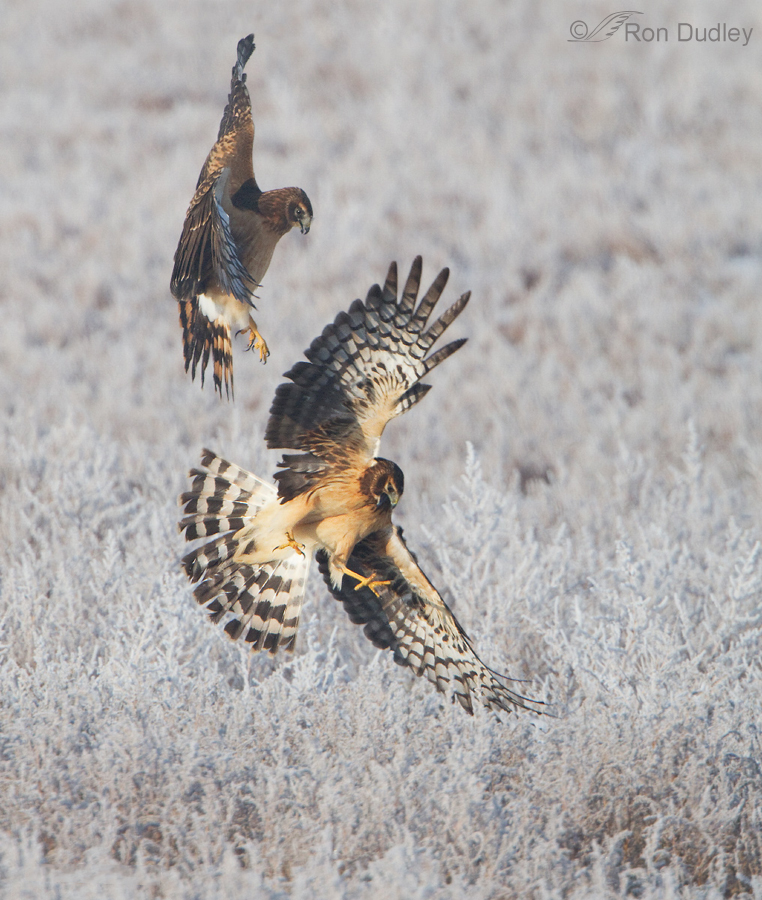
The seriousness of confrontations between Northern Harriers varies with the situation. Conflicts over food, especially during harsh winters, can be intense and dramatic but they often seem to spar with each other just for the “fun” of it. I’ve often seen and occasionally photographed both extremes of aggressive behavior.
Bald Eagle Potpourri
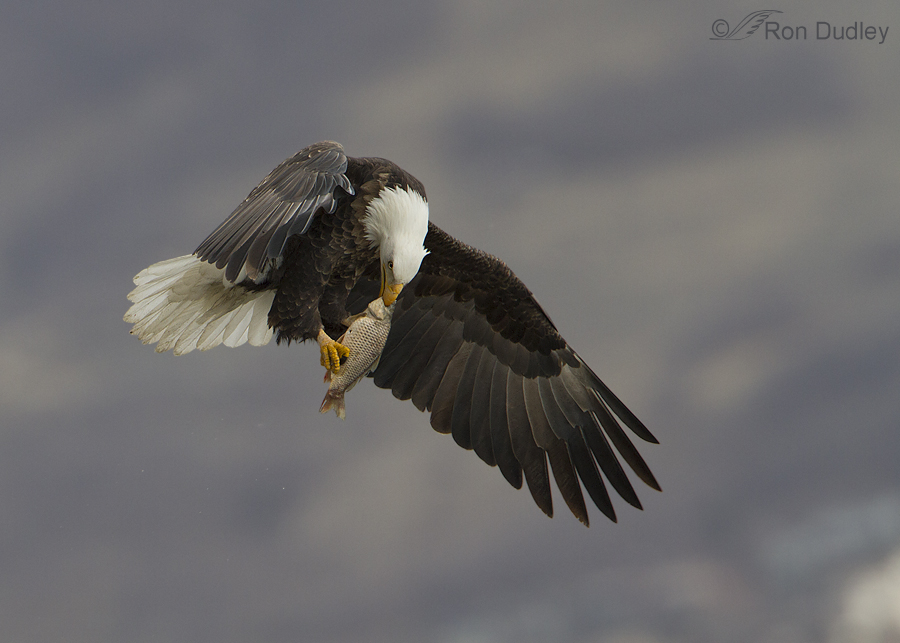
Yesterday morning I saw my first Bald Eagle of the season at Farmington Bay. It was too far away for even mediocre images but it was there! We have a small number of resident eagles in northern Utah but those few birds normally don’t hang out at Farmington this early in the season so I’m not sure if it was a wandering resident or an early migrant. Either way it was a delight to see.
As a result, when I began thinking about today’s post my mind kept returning to eagles so I thought I’d present several images taken at Farmington two winters ago.
Red-tailed Hawk Versus Northern Harrier – Aerial Confrontation
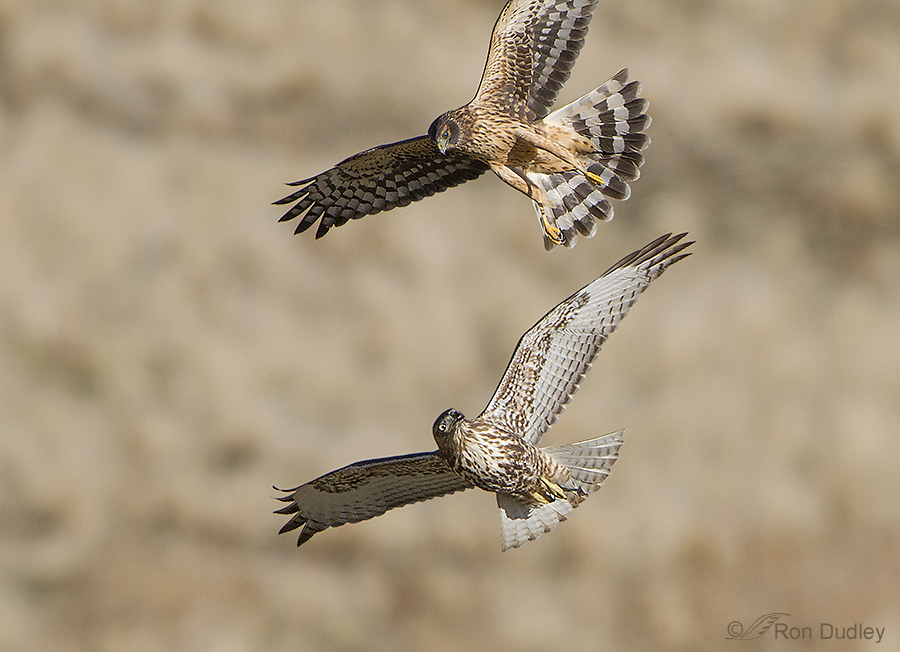
Northern Harriers are well-known for aggressive behavior toward larger raptors intruding on their territory but seldom chase off raptor species smaller than themselves. This interesting behavioral quirk apparently results from the ability of harriers to steal food from smaller raptors. It’s easier to pilfer prey from a smaller species than it is to catch it yourself so harriers let them hang around.
Plumage Development Stages Of Male Mountain Bluebirds
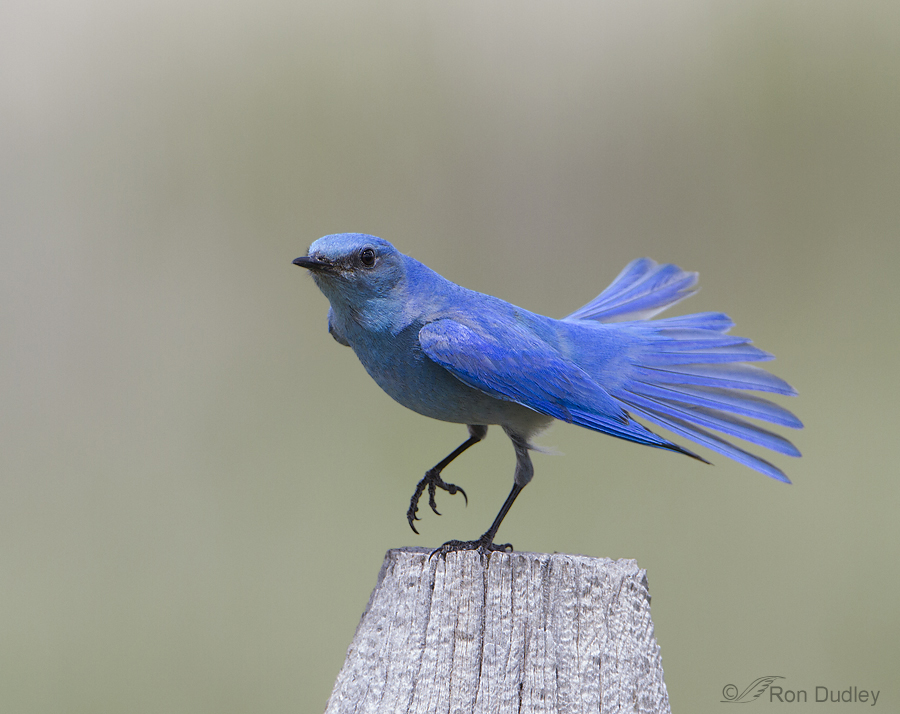
While photographing a juvenile male Mountain Bluebird in Montana last week I was struck by the interesting variation in color and patterns of the adult male in breeding plumage as compared to those of the juvenile male. I thought some viewers might be interested in a photographic comparison of some of their development stages.
Canvasbacks – Feeding and Fighting
Because of its striking appearance the Canvasback is often referred to as the “aristocrat” of ducks. But as you’ll see, it’s difficult to look aristocratic with your face, head and neck slathered in mud.
Coot Running Through Walls Of Water
Coots are quarrelsome, belligerent and cantankerous, especially the males in springtime before the females lay their eggs. Sometimes weaker combatants are killed.
Fighting Male Short-eared Owls
I’ve posted once before about the fighting Male Short-eared Owls I photographed in south-west Montana but I spent several days with these sparring birds and thought they deserved some more attention on my blog.
One Red-tailed Hawk, Six Canada Geese and One Huge Commotion
Last week, Mia and I enjoyed our first camping/photo trip of the season. We explored some remote areas of northern Utah and even found some interesting birds. But the incident I’m reporting on here still has me a bit perplexed.
Attack Of The Shoveler
Most Northern Shovelers breed far north of my area (northern Utah) so I rarely get to see their intensely agonistic breeding behaviors but I’ve seen and photographed some of it in mid-June at Red Rock Lakes National Wildlife Refuge in sw Montana. Northern Shovelers are the most territorial of all dabbling ducks and the sexes remain paired longer than any other species. Both of these factors contribute to their aggressive natures. These three sequential shots don’t have great image quality but I do think they illustrate some interesting behavior. 1/2000, f/7.1, ISO 500, 500 f/4, 1.4 tc I’d been photographing Short-eared Owls from my pickup but was aware of some activity from shovelers in the marshy grasses nearby. A commotion got my attention just in time to see the male on the right fly in to attack another male on the water. The second bird saw the attack coming and decided that discretion was the better part of valor and rose from the water in a hasty retreat. I like the non-plussed look of the retreating bird. 1/2000, f/7.1, ISO 500, 500 f/4, 1.4 tc In this second image of the series it’s not clear if the open bill of the incoming bird is due to aggressive vocalization or an attempt to bite the other male. 1/2000, f/7.1, ISO 500, 500 f/4, 1.4 tc But in this last image I think it becomes obvious that the intent was to bite the retreating duck. Bird behaviors fascinate me. They’re often both interesting and entertaining but many of…
Mean-fighting Coots
American Coots are, without question, the most aquatic, common and widely distributed rail species in North America. Clumsy and awkward fliers, they require long running take-offs to become airborne but they are skilled swimmers – largely due to their lobately webbed toes. And oh, are they ever ornery! But first, allow me to make a few excuses… These images of fighting coots were taken several years ago when I was relatively new to photography. My settings weren’t particularly appropriate so I’m not including them here. And most of these photos were shot in JPEG rather than RAW, so my processing options were extremely limited when I tried to adjust exposure, so the frustratingly white bill is pretty bright in a few of these images. This is one of the aggressive postures used by males to challenge other males. Whenever I see this I know that all hell is about to break loose and I’d better be ready. In my experience, coots have two primary fighting strategies. One is for each bird to lie on their backs in the water while propped up by their wings and tails and strike out at each other with their feet and claws. In this fighting position, their defense is to try to grasp the opposing birds feet. Here we get a good look at those unusual lobed toes. If they become locked together they then fight with their bills. The second fighting strategy uses bills and wings as weapons. If one bird gains the advantage it often tries to force its opponent underwater. The losing bird…
Northern Harriers Hunting
It’s getting to be what I call “harrier time” here in northern Utah so I thought I’d do a significant post on the species. For me, watching these birds hunt is absolutely mesmerizing and I could do it for hours. And I have – many, many times. But before I get into hunting I’d like to cover some basics on telling the sexes and ages apart. Sexual dimorphism in harriers is exceptional among birds of prey – telling adult males from adult females is easy because their colors are so dramatically different. But because juveniles of either sex strongly resemble adult females, that distinction becomes very tricky and causes a lot of confusion. So, here’s a primer: Adult males – gray above, mostly white below, black wing tips, lemon-yellow eyes Adult females – brown above, buffy with brown streaks below, lemon-yellow eyes (but in my experience, the eyes of adult females tend to be less bright than those of adult males) Juvenile of both sexes – similar to adult female but darker chocolate-brown above and strongly rufous (reddish) below Juvenile male – pale, greenish-yellow eyes Juvenile female – dark, chocolate-brown eyes All sexes and ages have the unique facial disc (ruff) characteristic of harriers. It’s not as prominent as it is in many owls but it can clearly be seen in this image. Its function is the same as it is in owls – to direct sound to the ears. Most hawks hunt almost exclusively by sight but because of their excellent hearing, thanks largely to the facial disc, harriers depend at least…
Western Grebes – Aggressive Speed Demons
I’ve spent a lot of time over the years watching and photographing the behaviors of Western Grebes and I’ve been impressed by both their aggressive tendencies toward other birds and by their incredible acceleration and speed in “running” across the water at those same birds. In my experience that aggression is most often directed toward other grebes in defense of mates, chicks or feeding areas but they are also aggressive toward a variety of other species and are suspected of stabbing them with their bill from under water. BNA reports Mallards and Red-necked Grebes found dead from stab wounds to the abdomen that were probably administered by Western Grebes. I’ve found photographing them as they dash across the water to be very challenging because of their speed and the unpredictable nature of the behavior – it usually comes with little or no warning and direction is difficult to anticipate. 1/1250, f/6.3, ISO 640, 500 f/4 Though these birds appear slim while sitting on the water, in reality they are fairly chunky and at the end of one of these “runs” their wide body throws up quite a wide wake as they begin to slow down and settle back into the water – much like a speedboat after the engine has been cut. 1/1000, f/6.3, ISO 500, 500 f/4, 1.4 tc This grebe is early in the acceleration stage with its “bow” still raised high. 1/1000, f/6.3, ISO 500, 500 f/4, 1.4 tc And then another wake as it begins to settle into the water. 1/1600, f/6.3, ISO 500,…
Grebe Running Across A Pond’s Surface To Protect Its Prized Fish

At first glance Pied-billed Grebes may come across as nondescript, bland little birds without much personality but I’ve found the opposite to often be true. When they’re not resting or grooming they’re active, quite vocal and when they’re feeding in groups they’re often aggressive, even pugnacious. Their kleptoparasitic tendencies can be entertaining to watch in the extreme.
Notice the layer of ice at the bottom of the frame – that ice will come into play later in the sequence.
Gadwall Stealing Food From A Coot

Gadwalls are well-known for stealing food (kleptoparasitism) from American Coots . They eat the same kinds of food (submerged aquatic vegetation), Gadwalls are almost a third bigger than coots and the two species often feed together in mixed flocks so being the bullies on the block, Gadwalls can’t resist taking advantage of the situation.
Fighting Harriers

The seriousness of confrontations between Northern Harriers varies with the situation. Conflicts over food, especially during harsh winters, can be intense and dramatic but they often seem to spar with each other just for the “fun” of it. I’ve often seen and occasionally photographed both extremes of aggressive behavior.
Bald Eagle Potpourri

Yesterday morning I saw my first Bald Eagle of the season at Farmington Bay. It was too far away for even mediocre images but it was there! We have a small number of resident eagles in northern Utah but those few birds normally don’t hang out at Farmington this early in the season so I’m not sure if it was a wandering resident or an early migrant. Either way it was a delight to see.
As a result, when I began thinking about today’s post my mind kept returning to eagles so I thought I’d present several images taken at Farmington two winters ago.
Red-tailed Hawk Versus Northern Harrier – Aerial Confrontation

Northern Harriers are well-known for aggressive behavior toward larger raptors intruding on their territory but seldom chase off raptor species smaller than themselves. This interesting behavioral quirk apparently results from the ability of harriers to steal food from smaller raptors. It’s easier to pilfer prey from a smaller species than it is to catch it yourself so harriers let them hang around.
Plumage Development Stages Of Male Mountain Bluebirds

While photographing a juvenile male Mountain Bluebird in Montana last week I was struck by the interesting variation in color and patterns of the adult male in breeding plumage as compared to those of the juvenile male. I thought some viewers might be interested in a photographic comparison of some of their development stages.
Canvasbacks – Feeding and Fighting
Because of its striking appearance the Canvasback is often referred to as the “aristocrat” of ducks. But as you’ll see, it’s difficult to look aristocratic with your face, head and neck slathered in mud.
Coot Running Through Walls Of Water
Coots are quarrelsome, belligerent and cantankerous, especially the males in springtime before the females lay their eggs. Sometimes weaker combatants are killed.
Fighting Male Short-eared Owls
I’ve posted once before about the fighting Male Short-eared Owls I photographed in south-west Montana but I spent several days with these sparring birds and thought they deserved some more attention on my blog.
One Red-tailed Hawk, Six Canada Geese and One Huge Commotion
Last week, Mia and I enjoyed our first camping/photo trip of the season. We explored some remote areas of northern Utah and even found some interesting birds. But the incident I’m reporting on here still has me a bit perplexed.
Attack Of The Shoveler
Most Northern Shovelers breed far north of my area (northern Utah) so I rarely get to see their intensely agonistic breeding behaviors but I’ve seen and photographed some of it in mid-June at Red Rock Lakes National Wildlife Refuge in sw Montana. Northern Shovelers are the most territorial of all dabbling ducks and the sexes remain paired longer than any other species. Both of these factors contribute to their aggressive natures. These three sequential shots don’t have great image quality but I do think they illustrate some interesting behavior. 1/2000, f/7.1, ISO 500, 500 f/4, 1.4 tc I’d been photographing Short-eared Owls from my pickup but was aware of some activity from shovelers in the marshy grasses nearby. A commotion got my attention just in time to see the male on the right fly in to attack another male on the water. The second bird saw the attack coming and decided that discretion was the better part of valor and rose from the water in a hasty retreat. I like the non-plussed look of the retreating bird. 1/2000, f/7.1, ISO 500, 500 f/4, 1.4 tc In this second image of the series it’s not clear if the open bill of the incoming bird is due to aggressive vocalization or an attempt to bite the other male. 1/2000, f/7.1, ISO 500, 500 f/4, 1.4 tc But in this last image I think it becomes obvious that the intent was to bite the retreating duck. Bird behaviors fascinate me. They’re often both interesting and entertaining but many of…
Mean-fighting Coots
American Coots are, without question, the most aquatic, common and widely distributed rail species in North America. Clumsy and awkward fliers, they require long running take-offs to become airborne but they are skilled swimmers – largely due to their lobately webbed toes. And oh, are they ever ornery! But first, allow me to make a few excuses… These images of fighting coots were taken several years ago when I was relatively new to photography. My settings weren’t particularly appropriate so I’m not including them here. And most of these photos were shot in JPEG rather than RAW, so my processing options were extremely limited when I tried to adjust exposure, so the frustratingly white bill is pretty bright in a few of these images. This is one of the aggressive postures used by males to challenge other males. Whenever I see this I know that all hell is about to break loose and I’d better be ready. In my experience, coots have two primary fighting strategies. One is for each bird to lie on their backs in the water while propped up by their wings and tails and strike out at each other with their feet and claws. In this fighting position, their defense is to try to grasp the opposing birds feet. Here we get a good look at those unusual lobed toes. If they become locked together they then fight with their bills. The second fighting strategy uses bills and wings as weapons. If one bird gains the advantage it often tries to force its opponent underwater. The losing bird…
Northern Harriers Hunting
It’s getting to be what I call “harrier time” here in northern Utah so I thought I’d do a significant post on the species. For me, watching these birds hunt is absolutely mesmerizing and I could do it for hours. And I have – many, many times. But before I get into hunting I’d like to cover some basics on telling the sexes and ages apart. Sexual dimorphism in harriers is exceptional among birds of prey – telling adult males from adult females is easy because their colors are so dramatically different. But because juveniles of either sex strongly resemble adult females, that distinction becomes very tricky and causes a lot of confusion. So, here’s a primer: Adult males – gray above, mostly white below, black wing tips, lemon-yellow eyes Adult females – brown above, buffy with brown streaks below, lemon-yellow eyes (but in my experience, the eyes of adult females tend to be less bright than those of adult males) Juvenile of both sexes – similar to adult female but darker chocolate-brown above and strongly rufous (reddish) below Juvenile male – pale, greenish-yellow eyes Juvenile female – dark, chocolate-brown eyes All sexes and ages have the unique facial disc (ruff) characteristic of harriers. It’s not as prominent as it is in many owls but it can clearly be seen in this image. Its function is the same as it is in owls – to direct sound to the ears. Most hawks hunt almost exclusively by sight but because of their excellent hearing, thanks largely to the facial disc, harriers depend at least…
Western Grebes – Aggressive Speed Demons
I’ve spent a lot of time over the years watching and photographing the behaviors of Western Grebes and I’ve been impressed by both their aggressive tendencies toward other birds and by their incredible acceleration and speed in “running” across the water at those same birds. In my experience that aggression is most often directed toward other grebes in defense of mates, chicks or feeding areas but they are also aggressive toward a variety of other species and are suspected of stabbing them with their bill from under water. BNA reports Mallards and Red-necked Grebes found dead from stab wounds to the abdomen that were probably administered by Western Grebes. I’ve found photographing them as they dash across the water to be very challenging because of their speed and the unpredictable nature of the behavior – it usually comes with little or no warning and direction is difficult to anticipate. 1/1250, f/6.3, ISO 640, 500 f/4 Though these birds appear slim while sitting on the water, in reality they are fairly chunky and at the end of one of these “runs” their wide body throws up quite a wide wake as they begin to slow down and settle back into the water – much like a speedboat after the engine has been cut. 1/1000, f/6.3, ISO 500, 500 f/4, 1.4 tc This grebe is early in the acceleration stage with its “bow” still raised high. 1/1000, f/6.3, ISO 500, 500 f/4, 1.4 tc And then another wake as it begins to settle into the water. 1/1600, f/6.3, ISO 500,…


